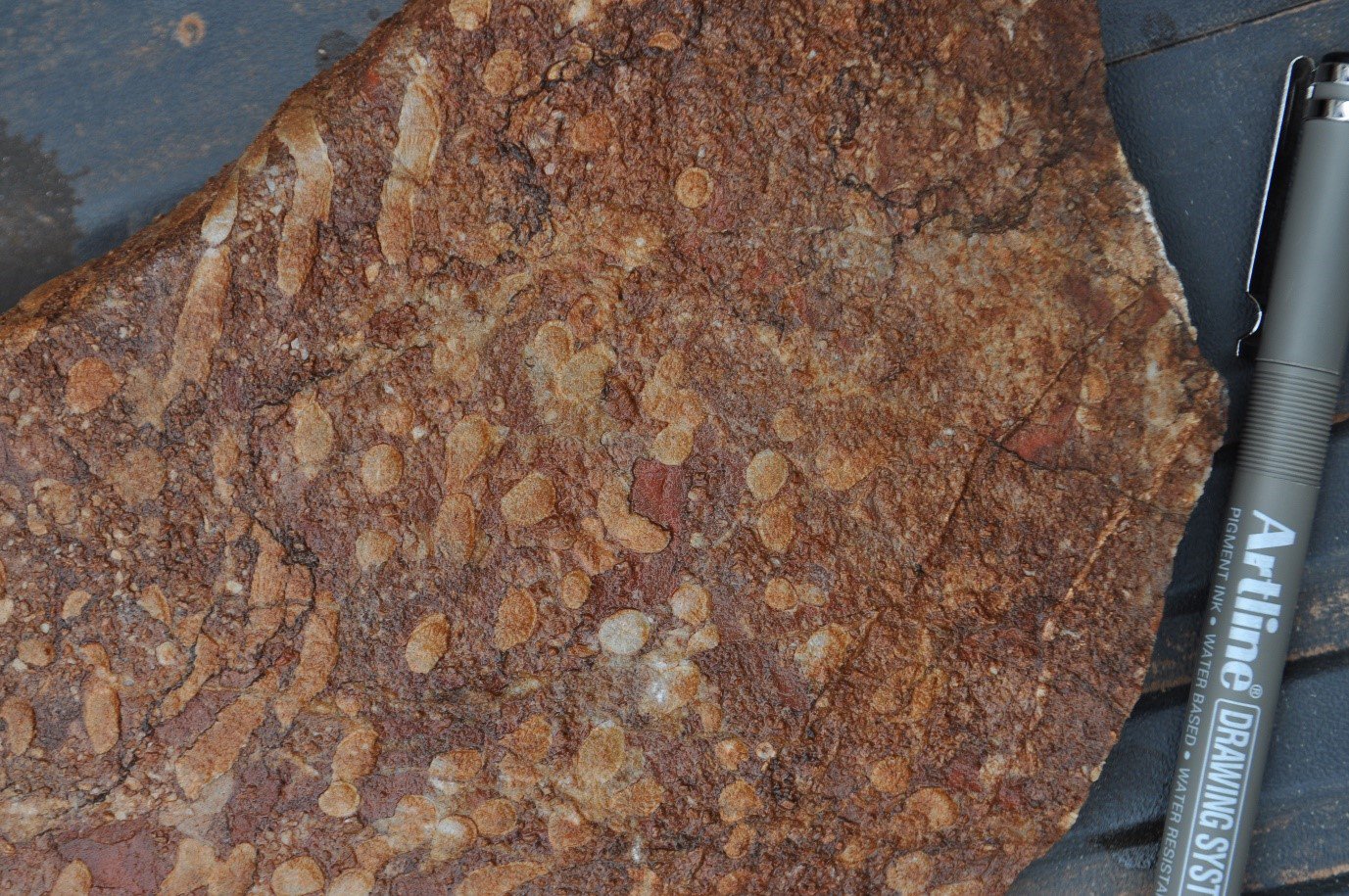New species discovered with the help of fossil enthusiasts!
Reports of fossils at a local garbage tip garnered the attention of fossil enthusiasts; these enthusiasts went on to help museum scientists discover two new species of Australian trilobite.
When enthusiasts discovered some fossils at a garbage tip near Gunningbland (NSW), they brought them to the attention of scientists at the Australian Museum and Museum Victoria. It turns out they had unearthed two new species, and one new genus, of trilobite from the Late Ordovician Period (450 million years ago)! This included Prophalaron jonsei, a highly unusual trilobite, and Dicranurus webbyi,the first odontopleurid recorded from the Ordovician of Australia.

The Gunningbland tip locality showing the large shale boulders which contained most of the trilobite material.
Image: Dr Patrick Mark Smith© Australian Museum
Last year I was invited by members of the Australian Fossil Hunting Club to join one of their excursions out to central New South Wales. They needed an expert to come along because they had been told of a new site which contained some strange and unfamiliar fossils near the town of Gunningbland.
The rocks from which these fossils are derived, belonged to what scientists call the Gunningbland Formation, in the Junee-Narromine Volcanic Belt of the Macquarie Arc. This means they were from the Late Ordovician Period (450 million years ago) and were laid down as part of a series of volcanic islands that were ringed by massive coral reefs (much like modern-day Fiji). Adjacent to these reefs, animals would have been found surviving on the muddy sea floor, likely below 100 metres water depth.

Fossil coral in the Gunningbland Formation. The white tubes represent the coral skeleton and the red material being silty limestone. Pen for scale.
Image: Dr Patrick Mark Smith© Australian Museum
The Gunningbland region had been geologically mapped by government scientists in 2001; however this new site was buried under soil at the time. It was only discovered later, in 2016, after the local council had excavated a hole to make a way for a rubbish dump. The site itself is not much to look at; only piles of grey-green to yellow shale boulders skirting an 80 metre long trench, full of trash (including the obligatory old wedding dresses and children’s tricycles). The smell, however, was rather pungent, as one might imagine for an open-air tip!
Mixed in with the trash, was an interesting collection of fossilised animals, included invertebrates such as sea sponges, brachiopods (clam-like animals), graptolites (floating tube dwelling “worms”), gastropods (snails), orthoconic nautiliods (squid-like animals) and of course, the ever-popular trilobites. Trilobites, to those unfamiliar, are an extinct group of marine arthropods, which means they belong to the same group as insects and spiders. In general appearance, trilobites resemble woodlice in overall shape. However, the exoskeleton covering their backs and eyes was composed of the mineral calcite. They are also one of the more popular fossil groups, highly prized by amateur collectors, as they show a great deal of diversity in size and form.
The most common trilobites at the site were Eastonillaenus goonumblaensis and Parkesolithus sp., as well as a few other rare species, such as: Eokosovopeltis currajongensis, Amphilichas shergoldi, Sinocybele thomasi, Remopleurides cf. exallos, Sphaerexochus sp., Cromus cf. optimus and Erratencrinurus (Prophysemataspis) sp. These were all previous described by Australian Museum and Macquarie University scientists in 2007. However, the real highlight for me was discovering two undescribed species, (which we eventually named Prophalaron jonsei and Dicranurus webbyi).

A specimen of the new genus and species (Prophalaron jonesi) showing the beautiful yellow colouring of siderite (after calcite) against the dark green matrix.
Image: Dr Patrick Mark Smith© Australian Museum

A specimen of the species (Dicranurus webbyi) showing the amazing long spines which extend off the body.
Image: Dr Patrick Mark Smith© Australian Museum
Prophalaron jonsei at first glance may appear to resemble members of a subfamily reedocalymeninae. Indeed, that’s initially where David Holloway (from the Museum Victoria) and myself thought to place the species. However, a few details, such as the lower convexity of the head and tail shields, as well as the shape of the hypostome (a plate under the head) suggest it belonged elsewhere. After a bit more research, we decided it was better placed in the calymeninae, and that it had convergently evolved a similar body shape. This is not infrequently encountered in trilobites, as they often had environmental pressure which forced them to evolve similar strategies to survive.
The other new beast, Dicranurus webbyi, is rather unusual. It possessed a pair of crazy ram horns, projecting off the top of its head (from which the genus derives its name). These horns are thought to have potentially acted as both a defence from predators and a sign of healthiness in mates. It came as something of a shock, that the species existed in Australia during the Ordovician. This is because the entire family, the odontopleurids, were not previously known from rocks of this age in Australia. Hence, this was the first occurrence of the family known in the geological record on this continent.
The discovery of these new species was entirely due to the help of fossil enthusiasts, such as the members of the Australian Fossil Hunting Club and locals, such as Geoff Thomas. The material we found at Gunningbland has formed an invaluable collection which became the foundation for these new species. It also goes to show how vital enthusiasts are to the science of palaeontology and, how through collaboration, our understanding of the past can really come to life.
Dr Patrick Mark Smith, Technical Officer, Palaeontology, Australian Museum Research Institute
More information:
Holloway, D.J., Smith, P.M. & Thomas, G. (2020) The trilobites Prophalaron gen. nov. (Calymenidae) and Dicranurus (Odontopleuridae) from the Upper Ordovician of New South Wales. Alcheringa An Australasian Journal of Palaeontology, DOI: 10.1080/03115518.2020.1740322
Picket, J. & Percival, I.G. (2000) Ordovician faunas and biostratigraphy in the Gunningbland area, central New South Wales, Australia. Alcheringa An Australasian Journal of Palaeontology, 25:1, 9-52, DOI: 10.1080/03115510108619212

